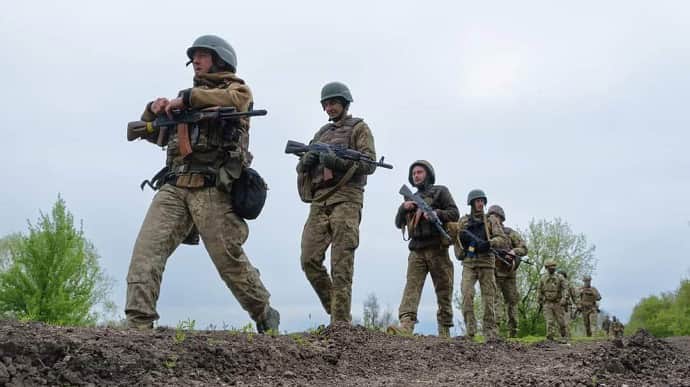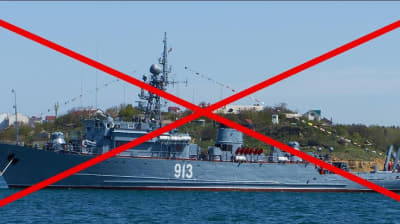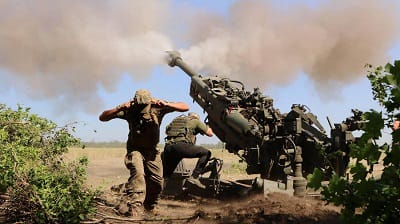ISW explains how Ukrainian forces could use delayed counteroffensive

According to analysts from the Institute for the Study of War (ISW), the current delayed counteroffensive by Ukraine’s Defence Forces may be aimed at exhausting Russian forces and preparing for further offensive actions.
Source: ISW
Details: The review notes that Ukrainian troops conducted counteroffensive operations on 21 June on at least three areas of the front.
Hanna Maliar, Deputy Defence Minister of Ukraine, said on 21 June that Ukrainian troops had achieved partial success during their offensive operations on the Bilohorivka-Shypylivka front.
A Russian milblogger also claimed that Ukrainian forces were mounting counterattacks in the areas south and west of Kreminna.
The Ukrainian General Staff reported that Ukrainian forces were continuing to mount offensives on the border between western Donetsk and eastern Zaporizhia oblasts on the Vilne Pole-Makarivka line, while Russian milbloggers have continued to talke about Ukrainian attacks in this area, especially those south of Velyka Novosilka.
Ukrainian and Russian sources said that Ukrainian forces are continuing offensive operations in the western part of Zaporizhzhya Oblast, both south and southwest of Orikhiv, and that Russian forces are counterattacking to regain lost territory on that front.
In addition, Russian sources noted a relatively slower pace of Ukrainian offensive operations in both the western part of Donetsk Oblast and the western part of Zaporizhia Oblast compared to previous days.
Ukrainian President Volodymyr Zelenskyy acknowledged that the progress of Ukrainian counteroffensives has been slower than expected, likely due to effective Russian defences and mined front-line areas.
As previously assessed by the ISW, the elaborate defences of Russian troops in the western part of Zaporizhzhia Oblast and prepared defensive positions throughout southern Ukraine are likely to slow down the advance of Ukrainian troops.
Experts note that the overall slower-than-expected pace of Ukrainian counteroffensive operations is not indicative of Ukraine's broader offensive capabilities, and Ukrainian forces are likely successfully setting the stage for future major efforts despite initial setbacks.
According to the analysts, it is important to observe that current Ukrainian operations may not only have territorial goals.
"Ukrainian forces may be conducting several offensive operations across the entire theater in order to gradually attrit Russian forces and set conditions for a future main effort," the report states.
The analysts add that losses are inevitable on both sides, but careful operational planning on the Ukrainian side likely seeks to mitigate and balance this condition with the equally important observation that depletion of Russian manpower is an important objective.
"The success of Ukrainian counteroffensives should not be judged solely on day-to-day changes in control of terrain, as the wider operational intentions of Ukrainian attacks along the entire frontline may be premised on gradually degrading, exhausting, and expending Russian capabilities in preparation for additional offensive pushes," the analysts conclude.
To quote the ISW’s Key Takeaways on 21 June:
- Ukrainian forces conducted counteroffensive operations on at least three sectors of the front on 21 June.
- Ukrainian President Volodymyr Zelenskyy acknowledged that the progress of Ukrainian counteroffensives has been slower than expected, likely due to effective Russian defences.
- The overall slower than expected pace of Ukrainian counteroffensive operations is not emblematic of Ukraine’s wider offensive potential, and Ukrainian forces are likely successfully setting conditions for a future main effort despite initial setbacks.
- Ukrainian defence industry conglomerate "Ukroboronprom" announced on 20 June that Ukraine built and successfully tested a 1,000km-range drone, indicating Ukraine’s intent and ability to target Russian military infrastructure in Russian-occupied territories and Russia with Ukrainian-made drones.
- Russian occupation authorities continue to codify legal mechanisms for forcible deportations from occupied areas of Ukraine.
- Russian and Ukrainian forces continued to engage in positional battles along the Kupyansk-Svatove line.
- Ukrainian forces continued counteroffensive operations near Kreminna.
- Russian and Ukrainian forces continued limited ground attacks in the Bakhmut area and along the Avdiivka-Donetsk City line.
- Ukrainian forces conducted limited ground attacks along the administrative border between western Donetsk and eastern Zaporizhia oblasts.
- Russian and Ukrainian forces conducted limited ground attacks in western Zaporizhia Oblast.
- The Russian military command is reportedly forming a new Azov Naval District as part of the Russian Black Sea Fleet.
- The Russian State Duma passed a law in the third reading raising age limits for Russian contract personnel and officers, likely to keep personnel currently due to retire in the force.
- Russian occupation authorities continue to deport children from occupied Luhansk Oblast to Russia under the guise of medical necessity.
Journalists fight on their own frontline. Support Ukrainska Pravda or become our patron!







